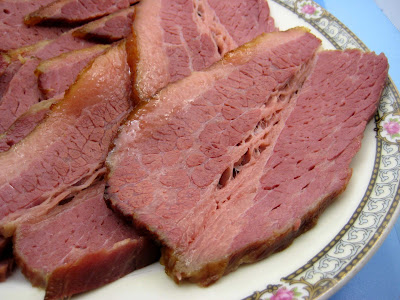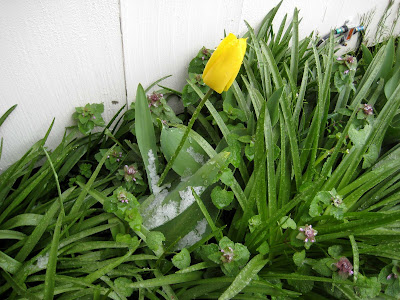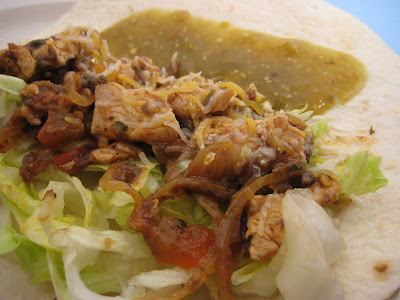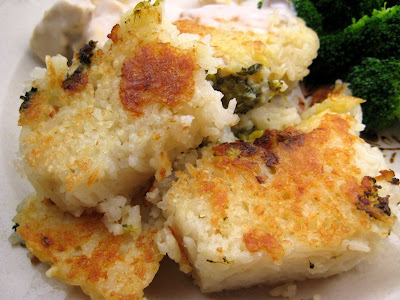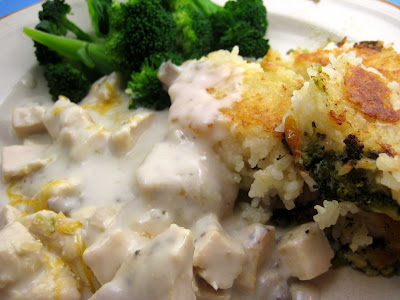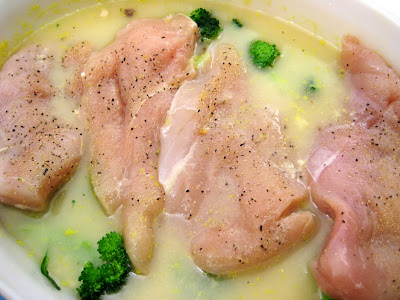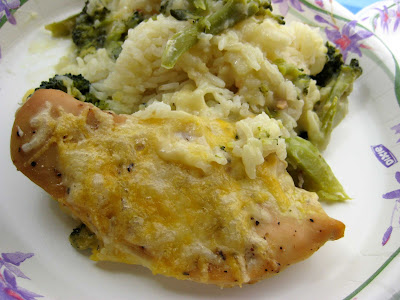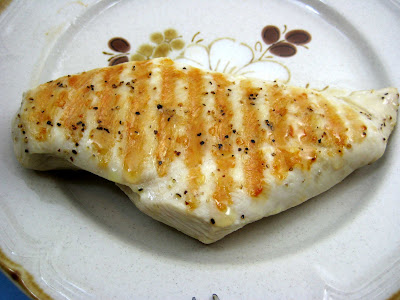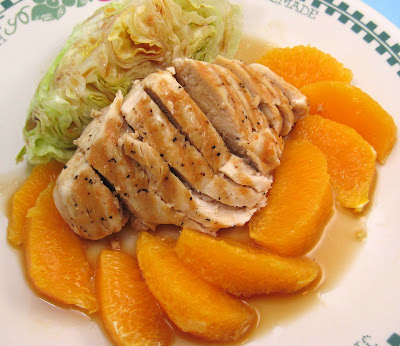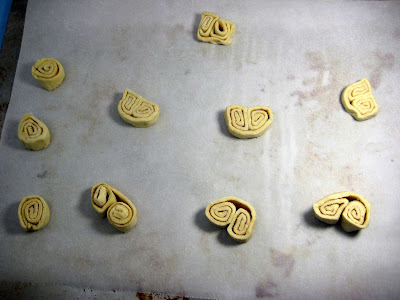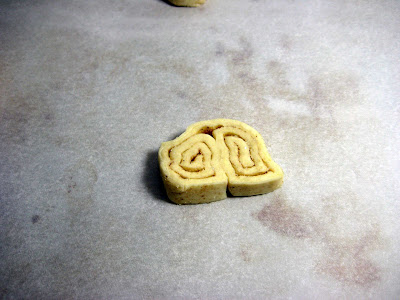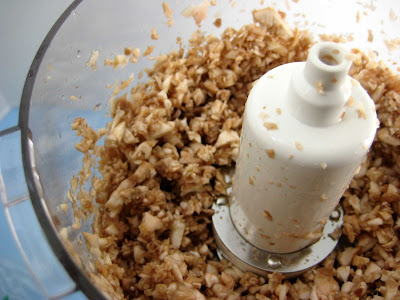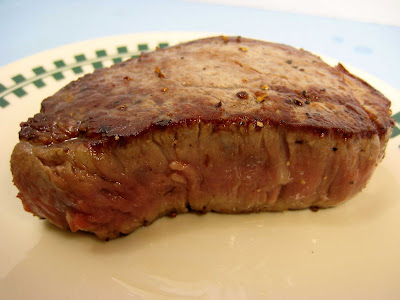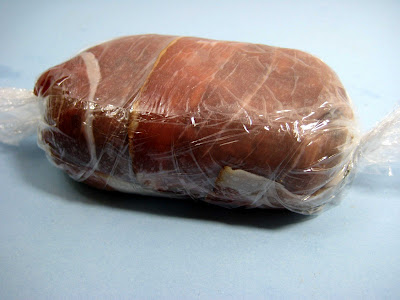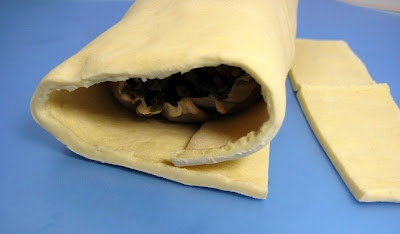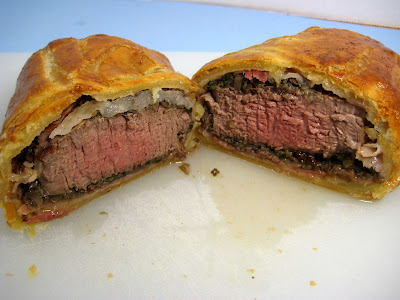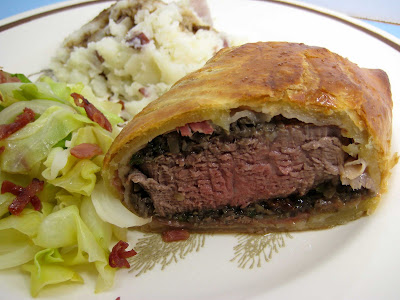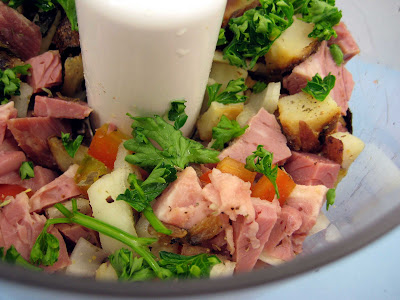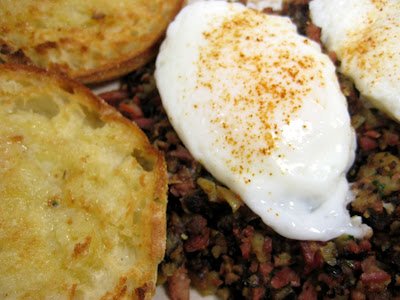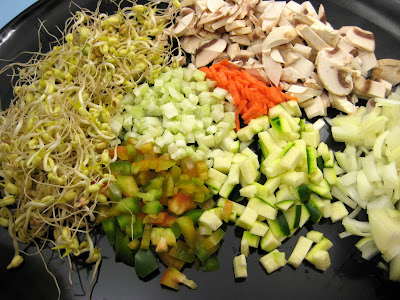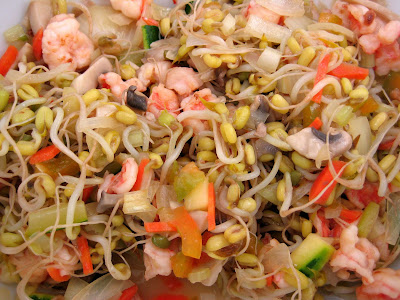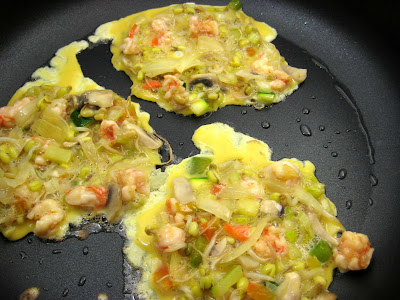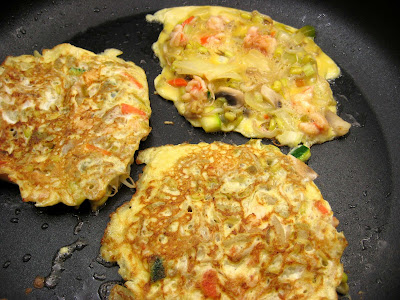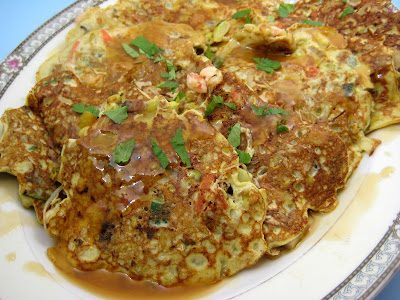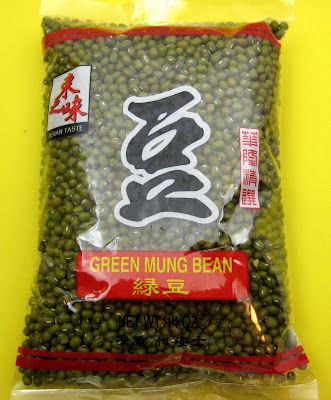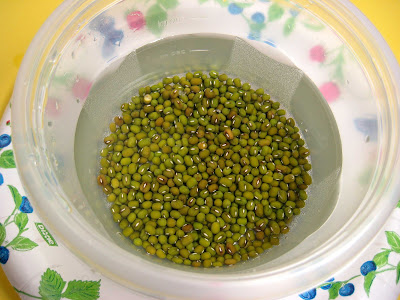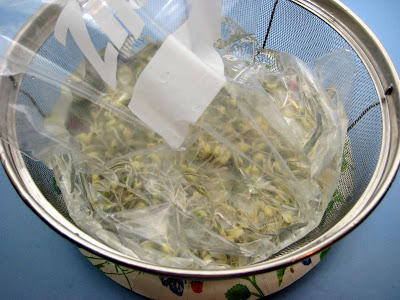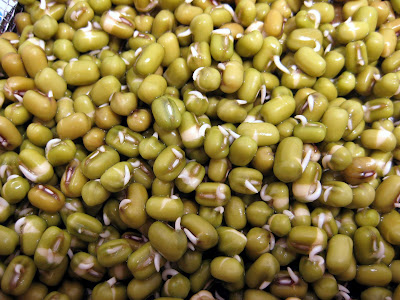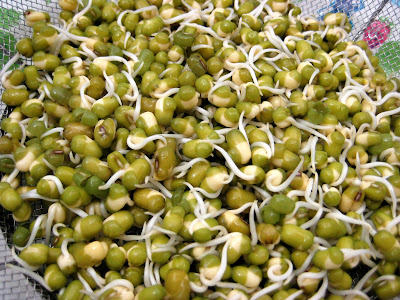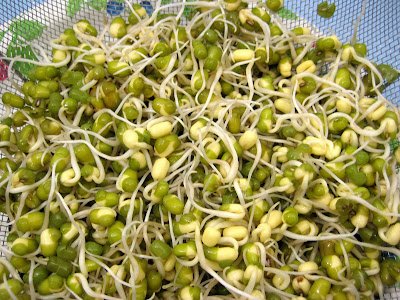I decided to slow roast a corned beef I purchased at Costco.
First, I washed off the corned beef and let the corned beef soak in clean water for about 30 minutes, usually I would soak overnight to draw out any excess salt. I don't know if a 30 minutes soak does a lot or not, but I gave it a shot.
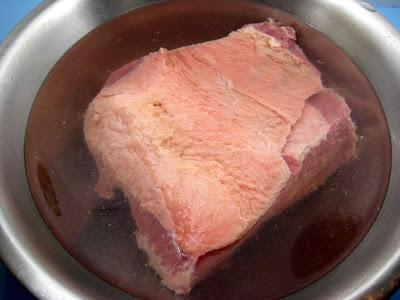
The Costco corned beef is a USDA Choice brisket and usually not overly salty. Also, looking at the cross-section, it's nicely colored, lean and not tough looking (plump, not dry and stringy).

When I bake brisket, I usually give it a light mustard coating. This is a technique I picked up in a barbecuing class for smoked ribs, since I'm cooking the brisket low and slow I used mustard on the brisket.

The mustard was rubbed on all surfaces on the corned beef. Also, when cooked you don't get a mustard flavor in the meat, but it adds a little layer of flavor that's not overpowering.
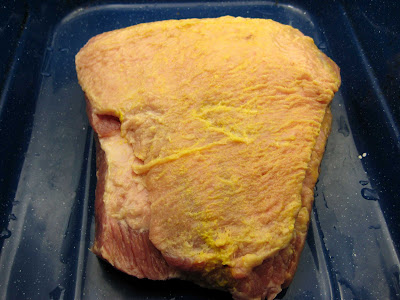
Afterwards, I used 3 T of brown sugar.
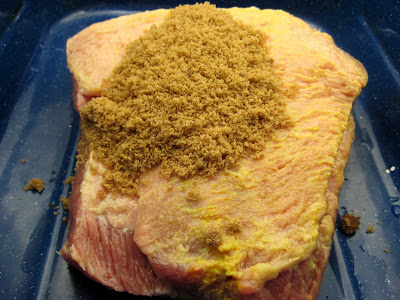
The brown sugar is rubbed into all surfaces of the corned beef. The sugar gives a little sweetness and helps with browning. Of course you can use more sugar, but I tend to use less since I'm not looking for a heavy glaze as you would with a ham.
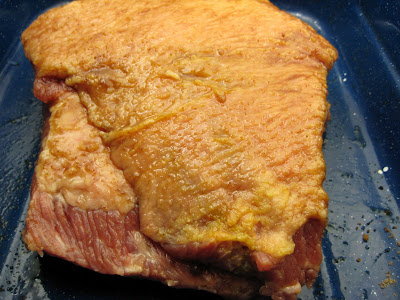
This is my first time using Guinness. I was looking in the fridge and found an old bottle of Guinness. Usually when I bake corned beef, I don't add any liquid but I wanted to try something different to see if the extra liquid would help tenderize the meat.
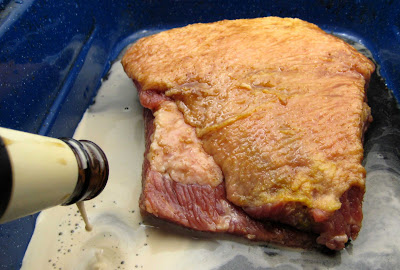
The brisket was placed in a 200F oven and allowed to cook slowly while I was at work.
Driving to work, I was amazed that there was snow on the road. This is more snow than we had during winter.

After 7 hours, the corned beef was taken out of the oven.
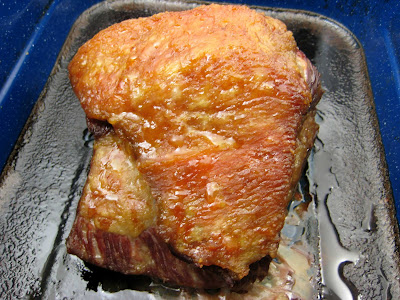
After a 10-15 minute rest, the corned beef was sliced.

Overall, the beef was good. Reminded me of deli counter lunch meat, but not as salty as luncheon meat. Also, no strong taste of pickling spice as you would get from boiling. The corned beef was firmer than a boiled corned beef.
I don't think the Guinness made a difference in flavor and the extra liquid did not change the texture of the slow roasted corned beef. Maybe the extra liquid helped draw out salt, but Costco corned beefs are generally more flavorful while less salty.
